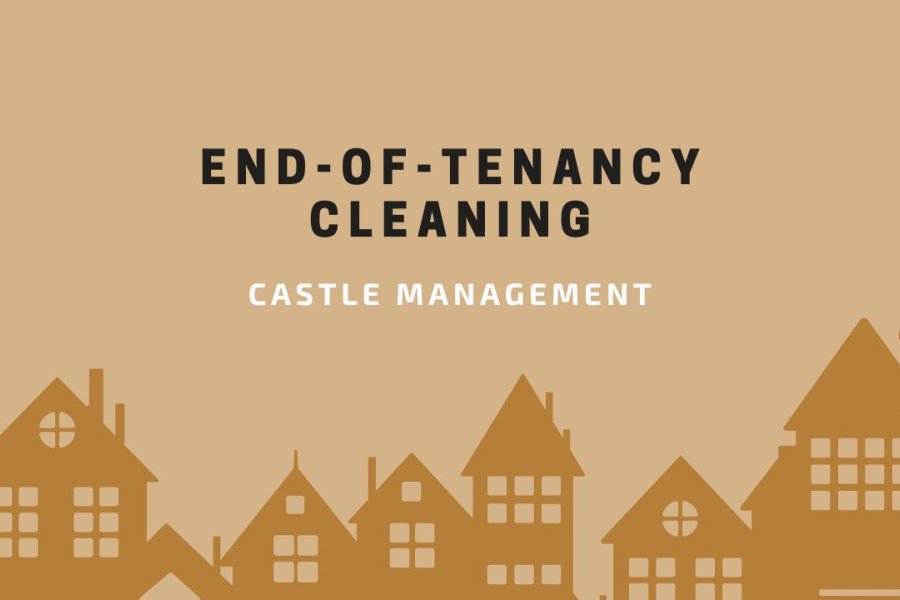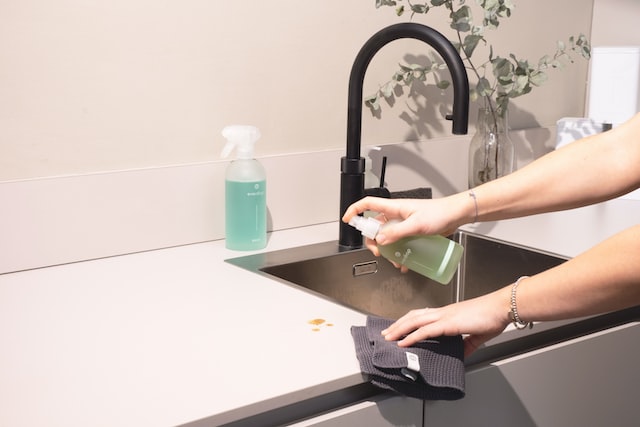
Keeping your rental property in good condition is a year-round task. As time-consuming as it can be, maintaining your rental property is non-negotiable. After all, a poorly maintained property cannot only drive tenants away but can also result in costly fines. Luckily, keeping your rental property in good condition doesn’t have to be solely your responsibility.
One of the simplest ways to keep your rental property in good shape between tenancies is to request that tenants deep clean the property before moving out. This will not only ensure that your rental is in good condition for new renters but can also prevent the most common security deposit disputes.
To help you make the end-of-tenancy process smoother, the experts Castle Management at have written this article. Keep reading to learn what end-of-tenancy cleaning entails and how it can make your life easier as a landlord.
What Is an End-of-Tenancy Cleaning?
End-of-tenancy cleanings refer to a cleaning clause that is typically added to lease agreements. Per this clause, tenants are responsible for thoroughly cleaning the property before moving out. Otherwise, they might not get their full security deposit back.

Key aspects of end-of-tenancy cleanings include:
- Deep cleaning. Tenants are generally expected to thoroughly clean every aspect of the property, including floors, walls, ceilings, and appliances. This cleaning should also include exterior areas, such as the front yard, driveway, and walkway.
- Restoring the property to its original condition. Tenants are required to restore any modifications or alterations that were made to the property during the tenancy, such as paint jobs or installations. All of this is so that the property is restored to the condition it was in at the beginning of the lease.
End-of-tenancy cleanings offer many benefits to landlords. Firstly, they help you keep your property in good condition, which can help you attract new renters more quickly and can increase the value of your property over time.
Moreover, these cleanings can help you prevent most security deposit disputes. A detailed cleaning checklist agreed upon at the beginning of the lease sets clear expectations of what tenants should do to get their money back in full.
How to Effectively Add an End-of-Tenancy Cleaning Policy to Your Leases
Adding an end-of-tenancy clause to all your leases is highly recommended. This will not only ensure that tenants leave your property in good condition when they move out but can also help you prevent most security deposit disputes. When adding this type of policy to your lease agreements, you must do the following things:

1. Outline Your Cleaning Requirements
Everyone has different standards of cleanliness. Clearly outlining your expectations in the move-out letter can help you avoid misunderstandings and prevent disputes.
A great way to do this is to instruct tenants to leave the property in the same condition it was when they first moved in. You can even send them pictures or notes from the move-in inspection, so they have a better idea of what is expected from them.
2. Take Normal Wear and Tear into Consideration
Normal wear and tear refers to the gradual deterioration of a property due to everyday living. Common signs of wear and tear included chipped or faded paint, scruff marks on floors and walls, and even appliance deterioration.
Because this is a normal part of renting out your home, the cost of repairing or restoring normal wear and tear shouldn’t be deducted from a tenant’s security deposit. Likewise, you cannot expect tenants to restore any signs of tear and wear from the property.
3. Create an End-of-Tenancy Cleaning Checklist
An end-of-tenancy clean covers all aspects of the property, including furniture and appliances. Because of this, it’s normal for your tenants to forget things. Providing them with a checklist will ensure no part of your rental is left dirty or broken.

Your end-of-tenancy cleaning checklist should include the following tasks:
- Check for scuff marks on walls. Then, clean them off or touch them up with a fresh coat of paint.
- Wipe and polish light switches and electrical sockets.
- Remove cobwebs from ceilings, walls, and fixtures.
- Wipe down door surfaces, furniture, and door handles.
- Clean windows and mirrors.
- Dust the tops of wardrobes, shelving, cupboards, mirrors, and curtain rails.
- Clear out and clean the inside of drawers and cupboards.
- Dust light fittings, lampshades, and bulbs.
- Vacuum carpets and rugs.
- Remove limescale from sinks, showers, and bathtubs.
- Clean and polish taps and water fittings.
- Scrub and disinfect the toilet.
- Clean kitchen and bathroom tiles, removing dirt and mold buildup from the grout if necessary.
- Wipe clean extractor fans.
- Clean and degrease the oven.
- Wipe down the kitchen countertops.
- Empty the fridge and clean it both inside and out.
- Empty, clean, and disinfect trash bins.
- Clean all appliances inside and out.
- Sweep and tidy outside areas.
- Mow the lawn, trim the bushes, and weed out any flower beds.
- Pressure wash the driveway.
- Empty and clean the garage.
- If necessary, refresh the curb appeal.
Bottom Line
As a landlord, you must know that managing a rental property comes with its set of challenges and responsibilities. One crucial aspect that should not be overlooked is the end-of-tenancy cleaning process.
This practice not only ensures a smooth transition between tenants but also plays a pivotal role in maintaining your property's value. Now that you know the importance of end-of-tenancy cleanings and how to enforce them effectively, you are better prepared to maximize returns on your investment.
Do you have more questions about the end-of-tenancy cleaning process? Contact Castle Management today! With over three decades of experience, we know how to keep your rental property in great condition throughout every tenancy.
